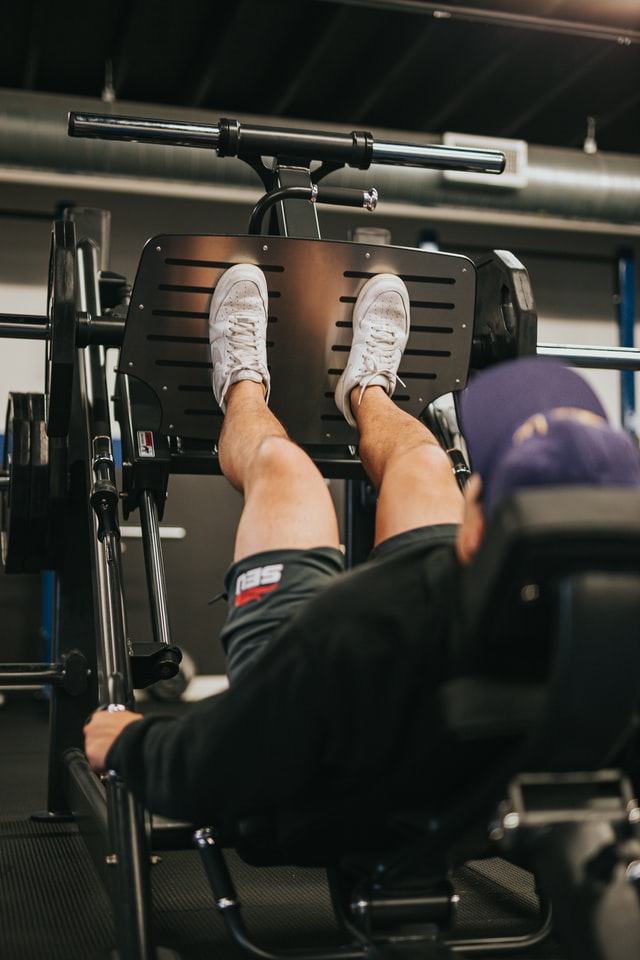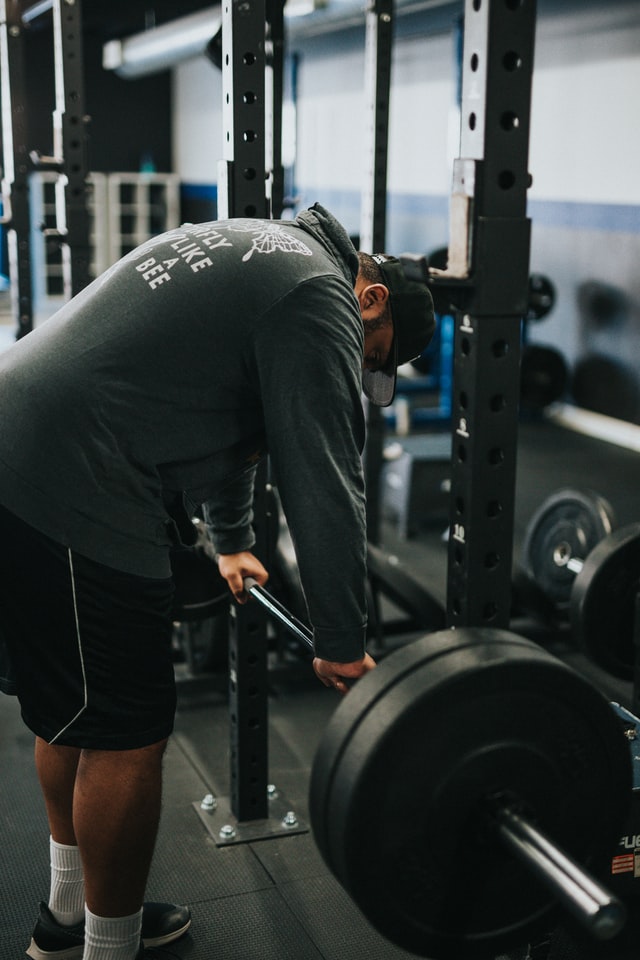Why exercises with free weights are better than exercises with machines
This article analyzes why free weight exercises are preferred over machine exercises for efficient strength development.
In this series of articles we deal with some of the most important concepts of strength training, collecting notes from the recently published book Strength, Speed and Physical and Sports Performance written by renowned researchers Juan José González Badillo and Juan Ribas Serna.
SUMMARY
- Work with free weights consists of performing exercises with external loads that move freely, depending on the magnitude and direction of the forces exerted by the subject.
- The advantages of free weight exercises over machine exercises are that they can be performed in all planes and in multiple directions, allowing multiple muscle groups and connective tissue to work to control the range of motion.
- The improvement of the strength in isolation of the muscles (training with machines) that intervene in a specific specific action can have a negative effect on the result of the training.
- Localized training of the extensor muscles of the lower back (training with machines) can have a positive effect on specific performance.
With the exception of a few exercises, such as, for example, exercises for training the adductors and hamstrings and some more, the complementary exercises that an athlete uses to improve specific performance should preferably be performed on machines, that is, with free weights.
The exercises that an athlete uses to improve specific performance should preferably be performed without machines
El trabajo con pesos libres consiste en realizar ejercicios con cargas externas que se mueven libremente, según la magnitud y la dirección e las fuerzas ejercidas por el sujeto. Within these exercises, a clear distinction must be made between the so-called “Olympic” ones: which are the snatch and two times and the partials of these, such as the power snatch, power clean… and the rest.

The advantages of free weight exercises over machine exercises are that they can be performed in all planes and in multiple directions, which can encourage numerous muscle groups (agonists, antagonists, stabilizers, and synergists) and connective tissue to act to control the movement path. This can create considerable kinesthetic information, which has a positive effect on balance, coordination, control of accelerations and decelerations in the various phases of the movement path, and the strengthening of muscles and connective tissues (1988 (Walsh, 1989; Armstrong, 1992 and 1993; Field, 1988).
In summary, in the opinion of Field (1988), work with free weights is the most effective means of training with loads for the development of speed, power and acceleration (although it would be more appropriate to say: “…it is the means of training with loads more effective for the development of force”)
As Kraemer & Nindl (1998) propose, when a machine sets the pattern of movement in an exercise, it also sets the tissue that will be recruited. This way of fixing the movement leads to an isolated muscle training, in such a way that the risk of producing a muscular imbalance is more likely than if exercises with free weight are used. A lack of variation in the recruitment pattern of muscle fibers, a lack of demand to maintain balance in different planes of movement and a lower use of synergistic muscles during the execution of exercises with machines can reduce the specificity of the exercise to apply its benefits. competition effects.
Free weight work is the most effective means of training for strength development.

In relation to the global training load, it must be taken into account that the demand of free weights seems to be greater than if the same training (intensity and volume) is done with machines. This may be due to an increase in the physiological requirements to control the exercises when they are done with free weights (Fry et al., 2000). This conclusion is reached after observing that training with free weights and high-intensity loads produces more setbacks or stagnation than higher-intensity training done with machines.
If you want to “tune” a lot in the training dosage, this may be important for programming the magnitude of the load, since the data suggest that the ability of an athlete to support loads with high intensity with free weights is lower than if the same loads are done with machines.
It has also been proposed that free weight exercises are much more effective in preventing injury and helping to improve performance than calisthenics or machine exercises (Parker, 1992). A problem associated with exercises performed on machines is the high probability that isolated or mono-articular muscles are trained, without significant intervention from other muscle groups and joints in a coordinated manner.
This circumstance means that the application or transfer of the improvement of muscular strength to competition gestures is scarce or null in most cases. For example, Baratta et al. (1988) found that specific training of the knee flexors results in increased activation of these muscles when trying to extend the knees.
Therefore, the training of isolated muscles can interfere with performance, which always requires the coordinated participation of antagonist, agonist, and synergist muscles. Something similar was observed by Bobbert and Van Soest (1994), who, when training the strength of the muscles involved in the vertical jump in isolation, the height of the jump was reduced by 9 cm, although the knee extensors improved their strength by 20%. .
the data suggest that the ability of an athlete to support loads with high intensity with exercises with free weight is lower than if the same loads are done with machines.
Therefore, it seems that the improvement of the strength in isolation of the muscles involved in a specific specific action can have a negative effect on the result. The explanation for these behaviors may lie in the fact that muscle groups work simultaneously when performance is sought in competition or in a multi-joint exercise, not by separate muscle groups.
Therefore, the imitations of these exercises are given by the fact that they do not train movements, but muscles. A seated knee extension is a muscle training (quadriceps), while a full squat would be the training of a movement, in which a series of muscle groups is used —and trained at the same time—, but whose fundamental objective is the improvement of the movement itself —because of the importance that this may have for sports performance—, not of the muscles involved in it.
Therefore, localized or isolated muscle group exercises have, fundamentally, a complementary auxiliary role or support for those exercises/movements that are the most determinant for improving specific performance. They may also have the function of preventing and recovering from injuries, as well as compensating for muscular imbalances.
It has been proposed that mono-articular exercises may not provide additional benefits to multi-articular exercises, neither in the short nor in the long term, when training the upper limbs, neither in trained nor in untrained subjects. In addition, carrying out this type of exercise produces greater fatigue without it being reflected in a greater adaptation in strength, and its indiscriminate use can decrease performance (Gentil et al., 2017).
the improvement of the strength in isolation of the muscles involved in a specific specific action can have a negative effect on the result.

However, it is accepted that, for example, localized training of the extensor muscles of the lower back can have a positive effect on specific performance (Gentil et al., 2017). The benefit of this exercise on the lower back is likely, and it is an exercise that has been used for many decades, but the inclusion of the well-performed clean exercise, we believe, could be sufficiently accomplished and with a greater positive effect on performance. in own competition actions.
Free-weight exercises that engage almost all major muscle groups in a coordinated manner, such as Olympic exercises and partials, full squats, jumping jacks, and throws, generate closed-chain movements, which have application or transfer. to most competition-specific gestures.
These free weight exercises improve strength in extensor (and plantarflexion) movements of multiple joints with a wide range of loads. All of these free weight exercises, except squats, are performed at high absolute speed, which may favor the effect on competition gestures, especially those that must be performed at high speed.
The squat, when trained, should also be performed at the maximum possible speed, but the absolute speed will always be lower than with the others, although its transfer to exercises such as jumping or running can also be very high.
Olympic exercises and their partials are characterized by the fact that, due to their technical demands, they must necessarily be performed at high speed (MRI speed around 1 m/s-1) (Gonzalez-Badillo, 2000), with a high degree of of coordination and an important production of force in the unit of time, that is to say, they are very explosive movements by nature when they are carried out with a moderately correct technique.
Jumps and throws have similar effects to the previous ones, but performed with lighter loads. These three groups of exercises have the property of prolonging the propulsive phase in the application of force, so that the braking phase is shorter or does not exist. The squat, when trained, should also be performed at the maximum possible speed, but the absolute speed will always be less than with the others, although its transfer to exercises such as jumping or running can also be very high.



